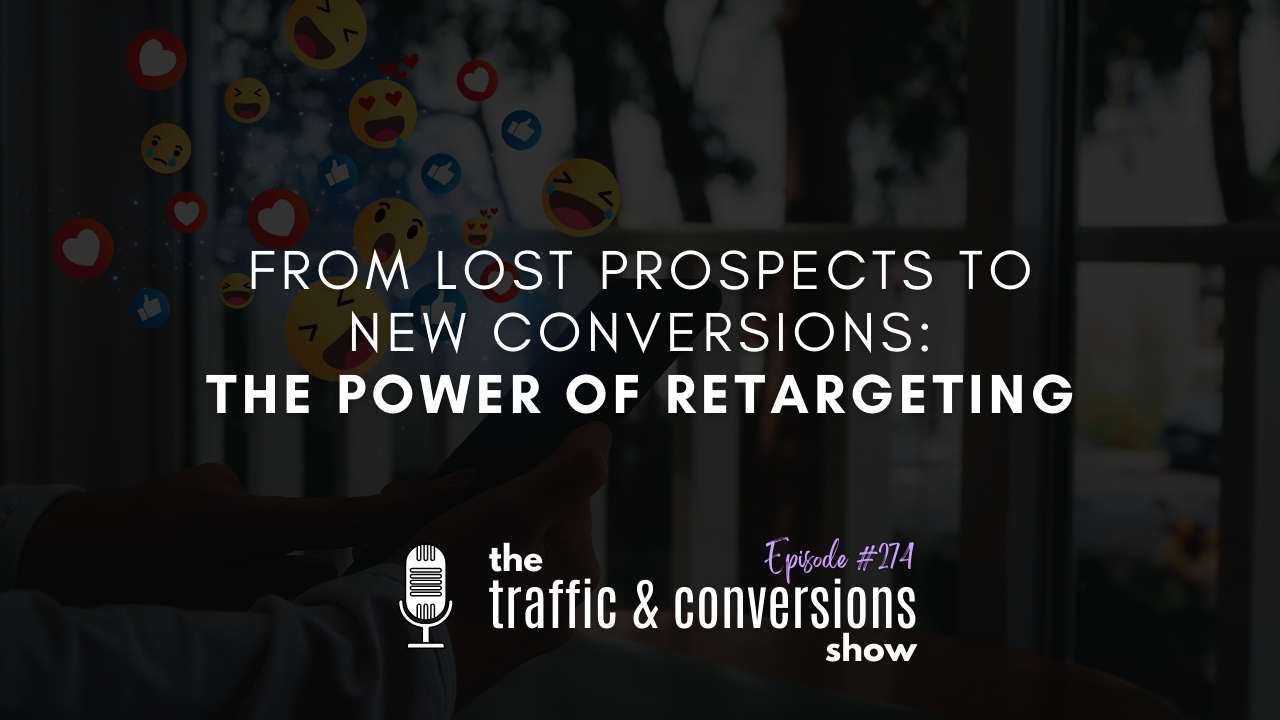As a digital marketer or business owner, you’ve probably heard the term “retargeting” getting thrown around in the world of online advertising. But if you’re not too sure what it actually means or how it can impact your business, you’re in the right place!
Retargeting is a potent tool that holds the key to rekindling connections with your audience and turbocharging your conversions. In this blog, we’ll dig into how it works, the different types of retargeting, best practices, and why it’s worth investing in.
The Importance of Retargeting
So, what exactly is retargeting, and why is it so crucial for your marketing efforts?
In simple terms, retargeting is a strategic marketing technique designed to re-engage potential customers who have interacted with your website or funnels but didn’t complete the desired action, such as making a purchase or signing up for an event. The power of retargeting lies in its ability to bring back lost prospects, providing them with a second chance to convert.
How Retargeting Works
When a user visits your website or interacts with your content, a small piece of code, often referred to as a pixel, is placed on their device. This pixel tracks their online behavior, capturing data like visited pages, viewed products, or items added to the cart. Using this data, businesses can create highly targeted ads displayed to potential customers as they browse other websites or social media platforms. This continuous visibility keeps your brand fresh in their minds, encouraging them to return and complete the desired action.
Different Types of Retargeting
Retargeting is not a one-size-fits-all strategy; there are various types catering to specific stages of the customer journey. The four main types include:
- Standard Retargeting: Targets users who visited your website or landing pages but didn’t convert. It focuses on re-engaging users and displaying targeted ads on other platforms to remind them of the products they showed interest in.
- Dynamic Retargeting: Displays personalized product ads based on users’ previous interactions. This technique tailors advertising content to individual users, increasing the chances of re-engagement and conversion.
- Email Retargeting: Involves sending follow-up emails to users who abandon their shopping carts or two-step order forms. This strategy aims to recover potentially lost sales by reminding users of their abandoned items and offering incentives.
- Social Media Retargeting: Reconnects with users on popular social media platforms based on their previous interactions with your website or digital content. Tailored ads are showcased on users’ social media feeds to keep your brand visible and relevant.
Why Businesses Should Invest in Retargeting
Retargeting is a cost-effective strategy, targeting users who have already shown an interest in your products or services. And compared to traditional advertising, it offers a much higher return on investment. Statistics reveal that retargeted visitors are 70% more likely to convert than new visitors. Additionally, platforms like Facebook reward businesses with lower advertising costs for targeting warm audiences.
Best Practices for Effective Retargeting Campaigns
To maximize the effectiveness of retargeting campaigns, there are some best practices that you’ll want to keep in mind:
- Segment Your Audience: Remember that one size does not fit all when it comes to retargeting so tailor ads for different audience segments.
- Avoid Ad Overload: Don’t bombard your audience with too many ads, as ad frequency matters – too many ads can be annoying and counterproductive. Opt for eye-catching designs and compelling copy that reminds users of the value they’ll get by returning to your site. Think about different creatives that you can use, especially video, as a lot of people tend to stop and engage with video content
- Measure and Optimize: Use tracking and analytics tools to monitor the performance of retargeting ads. Pay attention to metrics like click-through rates, conversion rates, and return on ad spend. Regularly conduct split testing to refine ad creatives, messaging, and audience targeting.
By staying strategic, segmenting audiences, and consistently optimizing campaigns, your business can leverage the power of retargeting to significantly impact your bottom line.
Interested to see how embracing the potential of retargeting could enhance your brand’s visibility and boost your conversions? Send me a DM today @themichellefernandez to find out more!


